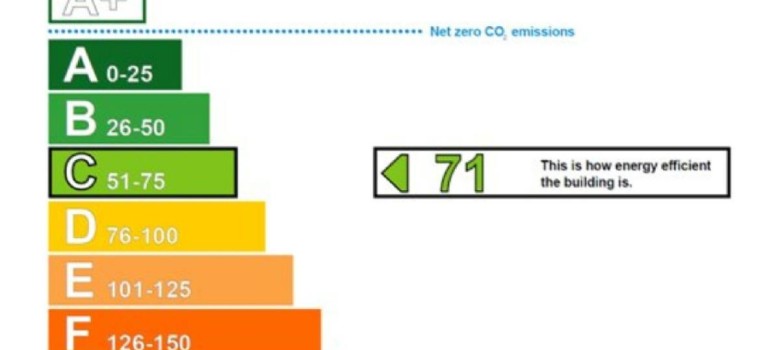
Offices are a common place where you might need a commercial EPC, and in this blog I’m going to talk you through a very typical office EPC that was carried out in London this year.
I arrived on site for our appointment with the client and the first thing was a quick chat with them. This lets me establish the layout of the property and what I need to look for. If possible, I will get the client to escort me around the building, to help with access to various areas and ensure that I see everything I need to.
Helpful customers will get a better rating at the end of the process, because if the assessor is left to work out where everything is for themselves, there is a good chance that something will be missed, and defaults will be entered into the software. The more defaults that have to be used, the worse the rating of the building when all is said and done.
Visiting the boiler room
Most offices will have a boiler room, and this one was no exception. Often the boiler is shared with other floors in the building, with the boiler room located in the basement, as you can see here. The gas and electric meters also happen to be located here, so I take snaps of them for our records.
Air con systems
This usually involves a trip to the roof, like in this office. The HVAC system here is what we call a split system, where the heating and cooling are provided by different systems, and there are typically these large air handling units sticking out somewhere – either on the roof or out the window.
The assessor visits the roof and gets photo evidence of the air handling unit, and tries to get the make and model number of the units. They will also take a look at the cassettes or wall mounted units in the office itself, as these will have different model numbers.
Zoning the property
Zoning the office is a really important part of the work. After looking around the office I work out the different ‘zones’, which simply refers to the different usages of the various parts of the building. In this example I zone out the office areas, reception, toilets and the stairs and circulation areas. Each of these areas will be entered into the software separately, according to their differing energy, heat, hot water and ventilation demand.
Offices are usually very simple to zone as there are not a large number of different usages for the space. Reception, office areas, toilets, and food prep areas are typically the zones you will find in an office. Other possible areas that may be zoned out are plant rooms where the boilers are housed, car park areas, and stairwells.
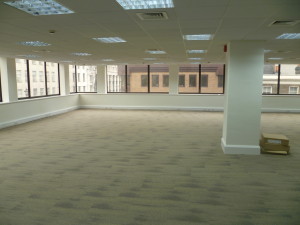
The property requires ‘zoning’ into areas depending on the use of the space. This area is unoccupied so can be easily zoned as one area.
At this point I take an opportunity to walk fully around the property at street level. This lets me see where the office meets other properties, and get a better view of things like window coverage and construction type.
Measuring Up
If the client has provided floor plans to scale, then I take 3 measurements to confirm their accuracy. If there are no plans, or they aren’t accurate, then the whole property must be measured up from scratch. In this instance, the layout was fairly simple, so the measurements only took half an hour or so, but sometimes this can be a long and frustrating exercise. It is why we always insist on floor plans and will usually charge a premium for larger properties with no floor plans for us to work from.
I always leave measuring up and zoning until last, as it means I have had the chance to get to know the property a little better and cover all the measurements I need.
I now run through my checklist and make sure I have everything I need. Every project is a little different so it is important to be careful and get all the evidence.
Once I’m done, I go back to the office and work my way through the desk work. This often takes 4 or 5 times as long as the site visit, and can be fairly tricky. Once done – you have a commercial EPC ready and it is sent to the customer.
Getting a commercial EPC
Need a commercial EPC? We have scoured the country for the best surveyors, so that we can make sure we only recommend those we really trust.
If you would like us to find you a local surveyor, just fill in the form below and we will be in touch shortly!

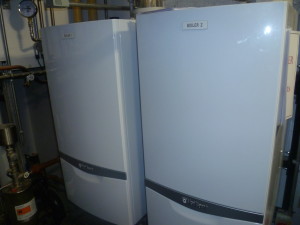
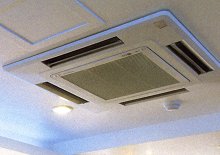
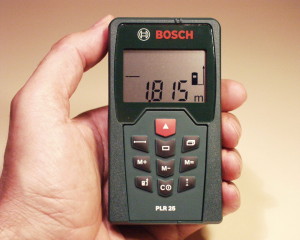






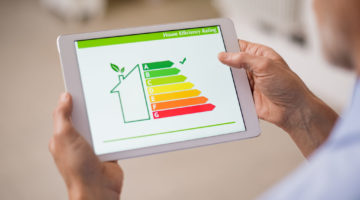





No Comments yet! Be the first one.